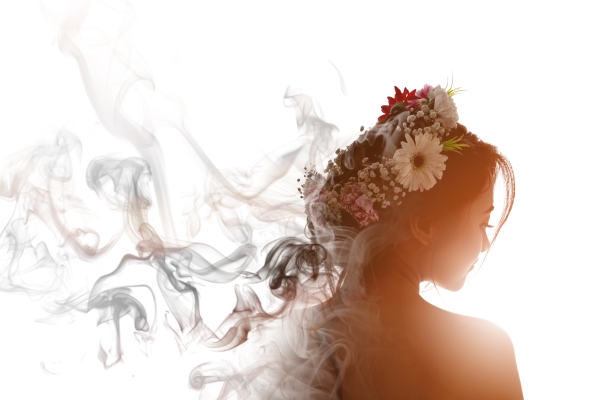Learned-odor response is a phenomenon where people naturally pair an aroma with a person, place, object, or event, creating an instantaneous memory link. This pairing of aroma and “thing” likely has ancient biological roots because remembering that a smell was safe or dangerous was essential to survival.
In my own life, I have an example of how powerful learned-odor response can be. When I was a teenager, my horse, Balaton, badly cut his leg. I could tell he was distressed as I approached him in the field and then I suddenly smelled blood and realized he was seriously injured. When I smell blood now, 37 years later, I instantly get a detailed mental picture of Balaton’s distressed face in my mind’s eye. Thankfully, Balaton lived, but both of us were pretty traumatized by the event.
A number of studies verify the occurrence of learned-odor responses. Research in 1991 paired camphor with fever induction and found that a fever response could be elicited in the test participants by the aroma of camphor for many years after the study. Whole memories, complete with all their associated emotions, can be prompted by smell. This is entirely unconscious and cannot necessarily be prompted voluntarily, although countless studies have shown that recall can be enhanced if learning is done in the presence of an odor and that same odor is presented at the time of recall.
As health-care practitioners and humans, we can capitalize on our natural tendencies to form learned-odor responses and use them therapeutically to create personal resource states. For example, let’s say you’re very stressed out at work and you want to identify methods for reducing your level of anxiety. You decide to try a learned-odor relaxation response. You go home, place a specifically chosen blend of essential oils in an aromatherapy diffuser, and meditate until you obtain a deeply relaxed and tranquil state. You breathe deeply and experience the aroma while you experience the relaxed state. The next time you’re at work and feeling stressed out, you whip out your bottle of the blend and inhale the aroma. The aroma triggers a memory of the relaxed state and you easily unwind and calm down in response. Research demonstrates that learned-odor responses have been used effectively to lower blood pressure, reduce colon spasms, slow and regulate breathing patterns, reduce anxiety, increase relaxation, and temper the emotional response to a traumatic event.
It makes sense you would choose essential oils that partner nicely with the learned-odor responses you want to create. Use sedatives like German chamomile, hyssop, lavender, and valerian if you want a calming action, and stimulants like bay laurel, rosemary, thyme, and peppermint for enhanced focus and mental clarity. For more information about learned odor responses and essential oils that stimulate or sedate the central nervous system, check out the Plant Spirit Life folio titled, Essential Oils for Physical Health and Wellness.
Here are a few essential oil blends to get you started. See the “Recommendations” section of this website for essential oil suppliers and only use high-quality, therapeutic grade essential oils and aromatherapy diffusers.
Mental Clarity Blend: Mix these essential oils in a 5 milliliter brown or cobalt blue bottle with a dropper top insert. Add 4-6 drops to an aromatherapy diffuser and diffuse the blend in the area where you are working.
-
- 4 drops bay laurel (Laurus nobilis) essential oil
- 2 drops rosemary (Rosmarinus officinalis) essential oil
- 11 drops lemon (Citrus limon) essential oil
- 2 drops nutmeg (Myristica fragrans) essential oil
Mental Fatigue Buster Blend: Mix these essential oils and distilled water in a 1 ounce glass bottle with a fine mist top. Spritz the blend over your head and shoulders and inhale any time you need a pick-me-up.
-
- 2 drops rosemary (Rosmarinus officinalis) essential oil
- 12 drops grapefruit (Citrus x paradisi) essential oil
- 1 drop peppermint (Mentha x piperita) essential oil
Mentally Calming Blend: Mix these essential oils and distilled water in a 1-ounce glass bottle with a fine mist top. Spritz the blend over your head and shoulders and inhale any time you need a break from stress.
- 4 drops lavender (Lavandula angustifolia) essential oil
- 7 drops mandarin (Citrus reticulata) essential oil
- 2 drops sweet marjoram (Origanum majorana) essential oil
- 2 drops hops (Humulus lupulus) essential oil
Ease Out of the Day Blend: Mix these essential oils in a 5 milliliter brown or cobalt blue bottle with a dropper top insert. Add 4-6 drops to an aromatherapy diffuser and diffuse the blend in the area where you are relaxing.
- 2 drops clary sage (Salvia sclarea) essential oil
- 11 drops lemon (Citrus limon) essential oil
- 4 drops spruce (Picea mariana) essential oil

